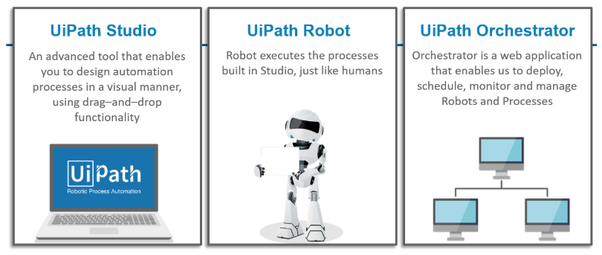Important Things Not to Do In Your RPA Deployments
Robotic Process Automation (RPA)is on a roll.
A third of the world’s enterprises are currently making serious investments in
RPA. And a survey by Horses for Sources found that 58% of companies have either
been ‘satisfied’ or ‘very satisfied’ with RPA’s ability to drive costs down and
realize surprising business value.
But RPA success isn’t a slam dunk. Ernst &
Young has found that as many as 30% to 50% of initial RPA projects fail. The
reason can be traced to a handful of factors.
Here
are the four things you should not do if you want your RPA deployment to
succeed.
- Treat RPA as an IT rather than Business Initiative
- Focus Exclusively on Cost-savings
- Target the Wrong Processes as Candidates for RPA
- Don’t Manage Expectations
Treat RPA as an IT rather than Business Initiative
IT is of course an essential partner in all business
transformations and that includes RPA. But when IT is in charge, the focus is
understandably on the technology. Does it work as promised? Is it secure? Can
it automate processes that require automating? Now, these are important
questions. But the business case must come first. What are thebusiness
objectives? What will the RPA initiative cost? What is the expected ROI — and
its timing?
And, most
importantly, how is the workforce impacted after the business processes are
automated? It’s important to delineate the roles of the business and of IT
carefully. A strong RPA initiative is led by the business partnered with IT and
with proactive input by HR and other relevant corporate functions.
Focus
Exclusively on Cost-savings
Yes, one of the main objectives of RPA is to cut
costs. But to focus entirely on cost savings is a mistake. You’ll generate
greater enthusiasm among everyone in the organization – from senior executives
to the people who will actually implement and scale RPA automation– if you
emphasize that you will be accomplishing a lot more than simply trimming
expenses.
Identifying other, transformative benefits such as
improving efficiency, enhancing customer service, growing revenues, increasing
productivity, and increasing job satisfaction will help you evangelize the
beginning of your RPA journey – one that is likely to impact the entire
enterprise – and drive more interest in making RPA a success. Remember, RPA is
not just about automation but rather about improving service.
Target
the Wrong Processes as Candidates for RPA
The most common mistake is to target overly complex
processes and attempt to remove human workers entirely from them. But this
leads to extra costs and considerably more deployment time—extending
implementation from weeks to many months.
The second most common error is to keep legacy
processes rigid without trying to rethink them. Your first goal should be to
target low-or medium-complexity processes that return the fastest and greatest
efficiency savings.
Don’t
Manage Expectations
Managing the expectations of those impacted by RPA,
which includes more stakeholders than you might think across the organization,
is critical.
You will find that people have both unrealistically
optimistic as well as gloomy expectations regarding outcomes at first.
Encourage everyone to think of the advantages of the technology, and stress
that the goal is to free employees from repetitive and tedious work. It’s
especially important to focus on the employees most impacted by the inherent
changes brought by RPA. Also, keep careful track of everything that happens in
the newly automated workplace. You should be prepared to celebrate successes as
well as deal with the unexpected.
